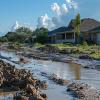Ermolieva, T., Havlik, P., Mosnier, A., Obersteiner, M. , Kyryzyuk, S., & Borodina, O. (2020). Dynamic linkage of global and local land use models using robust cross-entropy based downscaling procedure under uncertainties in priors. In: Integrated modeling and management of Food-Energy-Water NEXUS for sustainable development. Eds. Zagorodny, A.G., Ermoliev, Yu.N., Bogdanov, V.L., & Ermolieva, T., Kiev, Ukraine: Committee for Systems Analysis at Presidium of National Academy of Sciences of Ukraine — National Member Organization of Ukraine in International Institute for Applied Systems Analysis (IIASA). ISBN 978-966-02-9344-1



